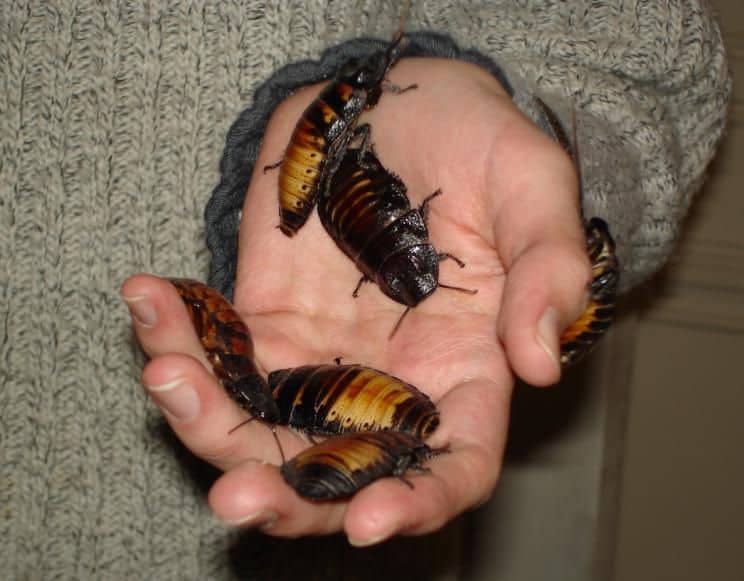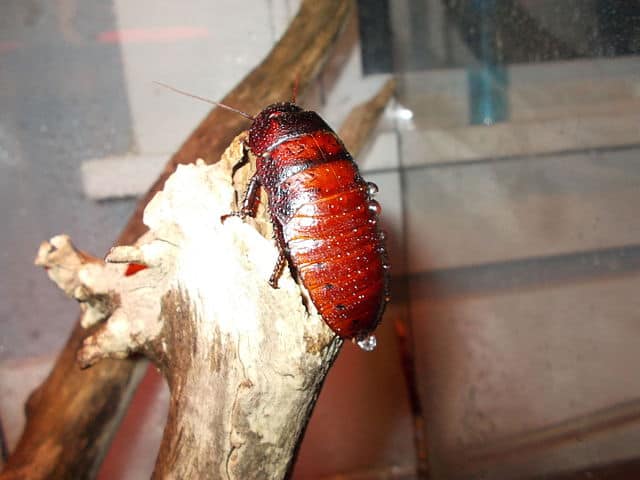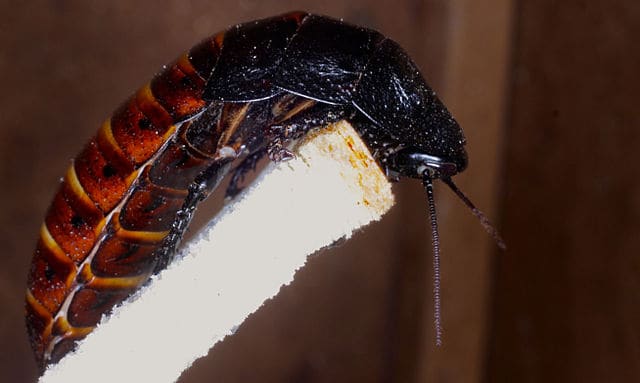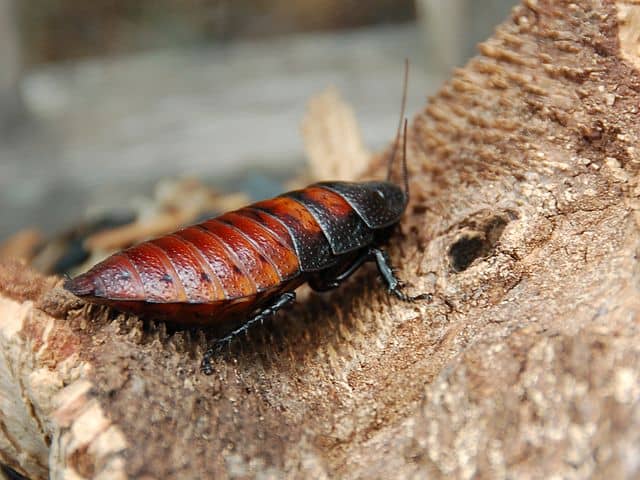Table of Contents
While not to everyone’s taste, Madagascar hissing cockroaches are actually very popular as exotic-type pets. If you are keen on one yourself, first there are a few things you will need to know about when it comes to taking care of these insects. For example, unlike other types of exotic pet, when it comes to housing hissing cockroaches do not require a ton of space. In fact, you could probably house yours in a half gallon container. Nevertheless, if you are planning to keep a number of hissing cockroaches, it is best to get a larger habitat.
What Will You Need for Your Hissing Cockroach?
As mentioned above, a small tank is suitable for one to two cockroaches, but a larger tank is preferable for a group. Whatever size of tank you buy though, you will need to ensure that it is well ventilated. A secure mesh lid or screen top is absolutely necessary as cockroaches have no problem climbing glass walls. If you really would prefer a tank without a lid though, consider adding petroleum jelly around the top rim of the tank as this sticky mess will prevent your cockroaches from escaping.
You will need to have substrate in the enclosure; materials such as peat moss, aspen wood shavings, coconut fiber, and fertilizer-free potting soil are all good options. However, it is best to avoid woods such as cedar or pine as these are known to harm cockroaches. You should also provide hiding places for your roaches by adding things such as egg cartons, cardboard tubes, and driftwood to the enclosure.

Madagascar Hissing Cockroaches
Hailing from Madagascar means hissing cockroaches are used to warm climes, but they can survive adequately enough at room temperature. However, to encourage growth and breeding, it is best to keep their tank at temperatures of up to 95F. To achieve this kind of heat, you can use a heat mat or heat lamp. There is a great selection of these on Amazon if you’re interested. Click here to find out more (opens in a new tab).
to find out more (opens in a new tab).
You do not need to provide UV lighting as with many types of exotic pets (mainly reptiles) as hissing cockroaches are nocturnal creatures by nature. In fact, it is best to keep their enclosure out of direct sunlight as they do not like bright lights. If you want to enjoy your cockroaches at night, you should invest in infrared or nocturnal lighting (here at Amazon).
at Amazon).
What Do You Feed a Madagascar Hissing Cockroach?
Hissing cockroaches eat a lot of different fruit and vegetables, which is good news for those who prefer pets that do not eat live insects or other creatures! Their diet in the wild includes plant materials or fruit that they scavenge from the floor of the Madagascan rainforests. In captivity, you can feed them with fresh fruit such as apple, banana, orange, or strawberry. Leafy greens are also suitable for these herbivores. You can also offer other vegetables such as carrots, squash, and peas.
Hissing cockroaches should be fed daily (at night) and any uneaten food should be removed from the tank the following day as these creatures will not eat rotten or decaying food. Leaving uneaten food in the tank can promote mold or fungus growth.
You will also need to provide fresh water every day. It is best to offer this water in a shallow dish filled with pebbles, which will help prevent your cockroach drowning in the bowl.
drowning in the bowl.

Female Madagascar Hissing Cockroach 
Hissing Cockroach
How to Tell if Your Hissing Cockroach is Healthy
Hissing cockroaches are quite hardy insects and do not normally suffer health problems. Nonetheless, a healthy cockroach will have a full and rounded body and will eat regularly. It will have a healthy exoskeleton and be alert and active. It should also hiss slightly when you touch it, which is completely normal.
You should be aware though that Madagascar hissing cockroaches do shed their exoskeletons six times before reaching adulthood. During shedding periods, it is common for them to stop eating and to hide out. This is completely normal behavior and nothing to worry about.
If your hissing cockroach were to become unwell, there are some signs that you are likely to notice. Dehydration can be a problem for some cockroaches; if they are not getting enough water, they will look wrinkled or shriveled. If you notice other signs such as loss of appetite (other than when molting), lethargy, or a dull exoskeleton, it could be that something is up with them health-wise.
Photo Credits:
- Featured Image (Madagascar Hissing Cockroach): Almabes
 – Public domain.
– Public domain. - Madagascar Hissing Cockroaches: Husond
 – CC BY-SA 3.0
– CC BY-SA 3.0 .
. - Female Madagascar Hissing Cockroach: Nixisanalien – CC BY-SA 4.0
 .
. - Hissing Cockroach: Jarjarspringsteen – CC BY-SA 3.0
 .
.
Video:
Madagascan Hissing Cockroaches as Pets

